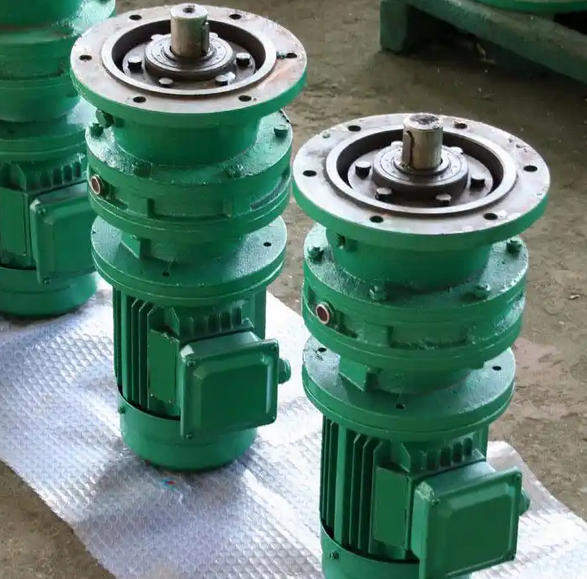How to avoid wear on the output shaft of BLY33-11-18.5 cycloidal pinwheel reducer
The following are 10 core measures to avoid wear on the output shaft of the BLY33-11-18.5 cycloidal pinwheel reducer. Each measure is based on the structural characteristics of the reducer model (No. 33 machine base, 11 level transmission ratio, 18.5KW high power) and operating requirements, providing specific and operable technical solutions to ensure practicality and pertinence:Precision matching of output shaft mating components: The tolerance of the inner holes of the mating components such as the output shaft, coupling, and sprocket should be controlled within the H7/h6 transition mating range to avoid interference fit causing forced compression of the shaft surface during assembly, or excessive clearance causing impact wear during operation. Before assembly, it is necessary to use a micrometer to check the shaft diameter (BLY33 series output shaft diameter is about 55-60mm) and the inner hole size of the mating parts to ensure that the mating clearance is between 0.01-0.03mm. At the same time, burrs and oil stains on the mating surface should be removed to ensure a tight fit.

Optimization of shaft surface strengthening treatment process: For torque loads under 18.5KW high-power conditions, the output shaft surface needs to be treated with high-frequency quenching and low-temperature tempering, with a quenching layer depth controlled between 2-3mm and a surface hardness of HRC55-60, to enhance the wear resistance and anti bite ability of the shaft surface; The key mating shaft neck can be additionally treated with chrome plating or nitriding, with a chrome plating layer thickness of 0.02-0.05mm, further improving surface hardness and smoothness, and reducing friction and wear.
Choose an appropriate lubrication scheme and maintain it regularly: use extreme pressure anti-wear lubricating oil (ISO VG 220) to ensure a stable oil film is formed on the mating surface between the output shaft, bearings, and oil seals, reducing the risk of dry friction; The dual axis structure needs to focus on checking the filling of lubricating grease on both ends of the shaft neck. Lithium based pressure lubricating grease (NLGI grade 2) should be selected and replenished every 2000 hours of operation, with a filling amount of 1/3-1/2 of the bearing chamber volume each time, to avoid increased wear caused by insufficient lubrication.
Strengthen the sealing protection of the output shaft: replace the matching skeleton oil seal (with a specification matching the shaft diameter, such as 55 × 75 × 12), use FKM material, withstand oil temperature of -30 ℃~150 ℃, and adapt to the temperature rise during high-power operation; Install a dust ring or protective cover on the outer side of the oil seal to prevent dust and water vapor from entering the mating surface, avoiding abrasive wear and corrosion. Especially in outdoor or dusty conditions, it is necessary to regularly clean the impurities in the sealing area.
Control load impact and avoid overload operation: The 18.5KW motor corresponds to a large output torque, and frequent overload impact during equipment startup needs to be avoided. Soft starter or variable frequency starting can be used to smoothly increase the speed; Install overload protection devices (such as torque limiters) that automatically shut down when the load exceeds 1.2 times the rated torque to prevent torsional fatigue wear of the output shaft caused by overload, while avoiding frequent forward and reverse operations and reducing the alternating stress on the shaft surface.


